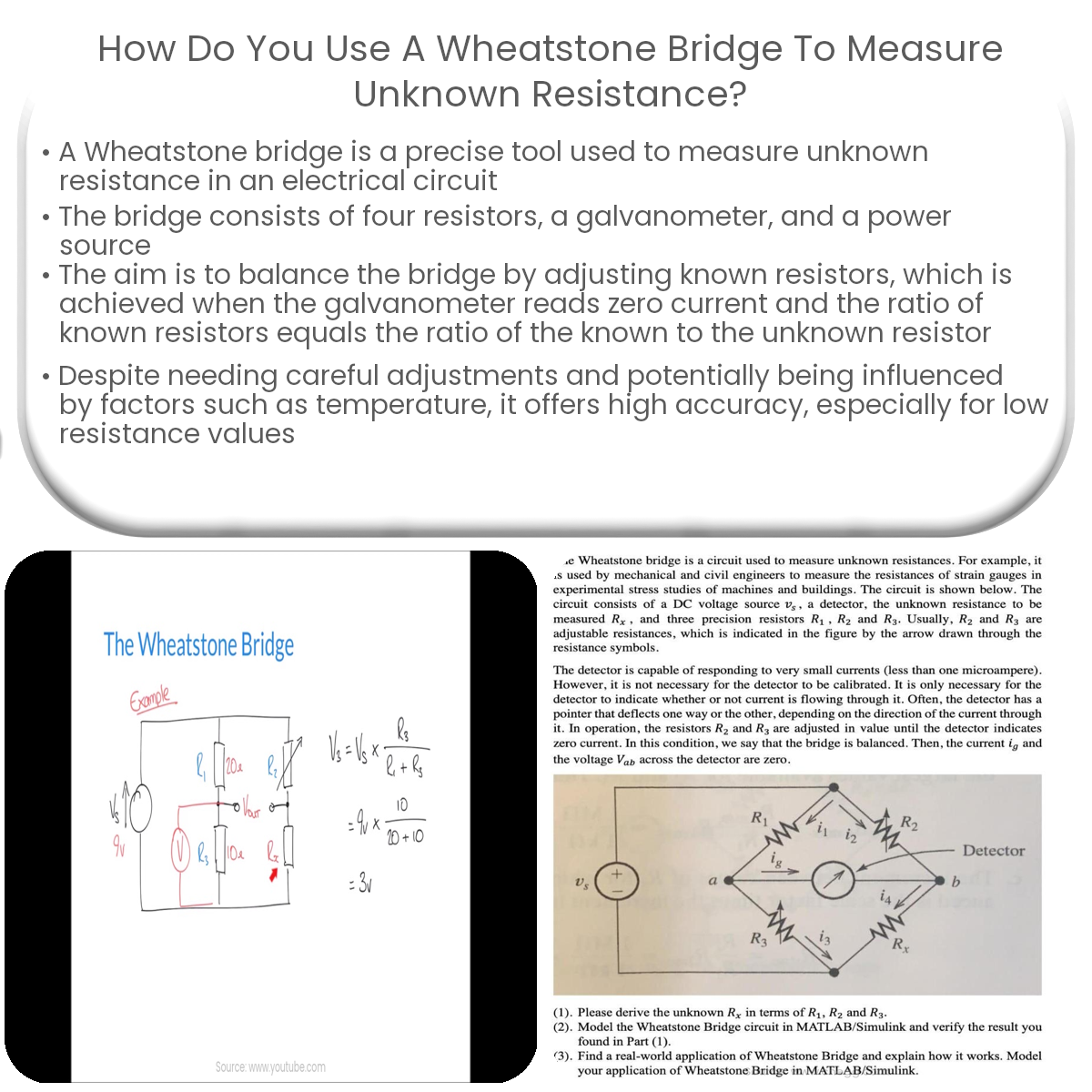A Wheatstone bridge measures unknown resistance by balancing the bridge and using known resistances to calculate the unknown resistor’s value.
Using a Wheatstone Bridge to Measure Unknown Resistance
A Wheatstone bridge is an electrical circuit used to determine an unknown resistance by balancing two legs of a bridge circuit, one leg of which contains the unknown component. This article will explain how to use a Wheatstone bridge to measure unknown resistance.
Wheatstone Bridge Components
The Wheatstone bridge consists of four resistors, a galvanometer, and a power source. The resistors are connected in a diamond configuration, with the galvanometer connected between the top and bottom nodes, and the power source connected across the left and right nodes. The four resistors are arranged as follows:
- R1 – Known resistor
- R2 – Known resistor
- R3 – Known resistor
- Rx – Unknown resistor
Wheatstone Bridge Balancing
The goal is to adjust the known resistors (R1, R2, and R3) until the bridge is balanced, meaning the galvanometer reads zero current. When the bridge is balanced, the ratio of R1 to R2 is equal to the ratio of R3 to Rx:
R1 / R2 = R3 / Rx
Once balanced, the unknown resistance (Rx) can be calculated using the known resistances and the observed ratios.
Procedure for Measuring Unknown Resistance
- Connect the four resistors, galvanometer, and power source as described above.
- Adjust the known resistors (R1, R2, and R3) to balance the bridge, indicated by a zero current reading on the galvanometer.
- Use the balanced bridge equation (R1 / R2 = R3 / Rx) to calculate the unknown resistance (Rx).
Advantages and Limitations
Using a Wheatstone bridge to measure unknown resistance offers high accuracy and sensitivity. It is particularly useful for measuring low resistance values and is widely used in scientific and industrial applications. However, it requires precise adjustments and may be affected by factors such as temperature variations and component tolerances.
In conclusion, a Wheatstone bridge is an invaluable tool for measuring unknown resistance in electronic circuits. By carefully balancing the bridge and using the known resistance values, it is possible to accurately determine the unknown resistor’s value.


